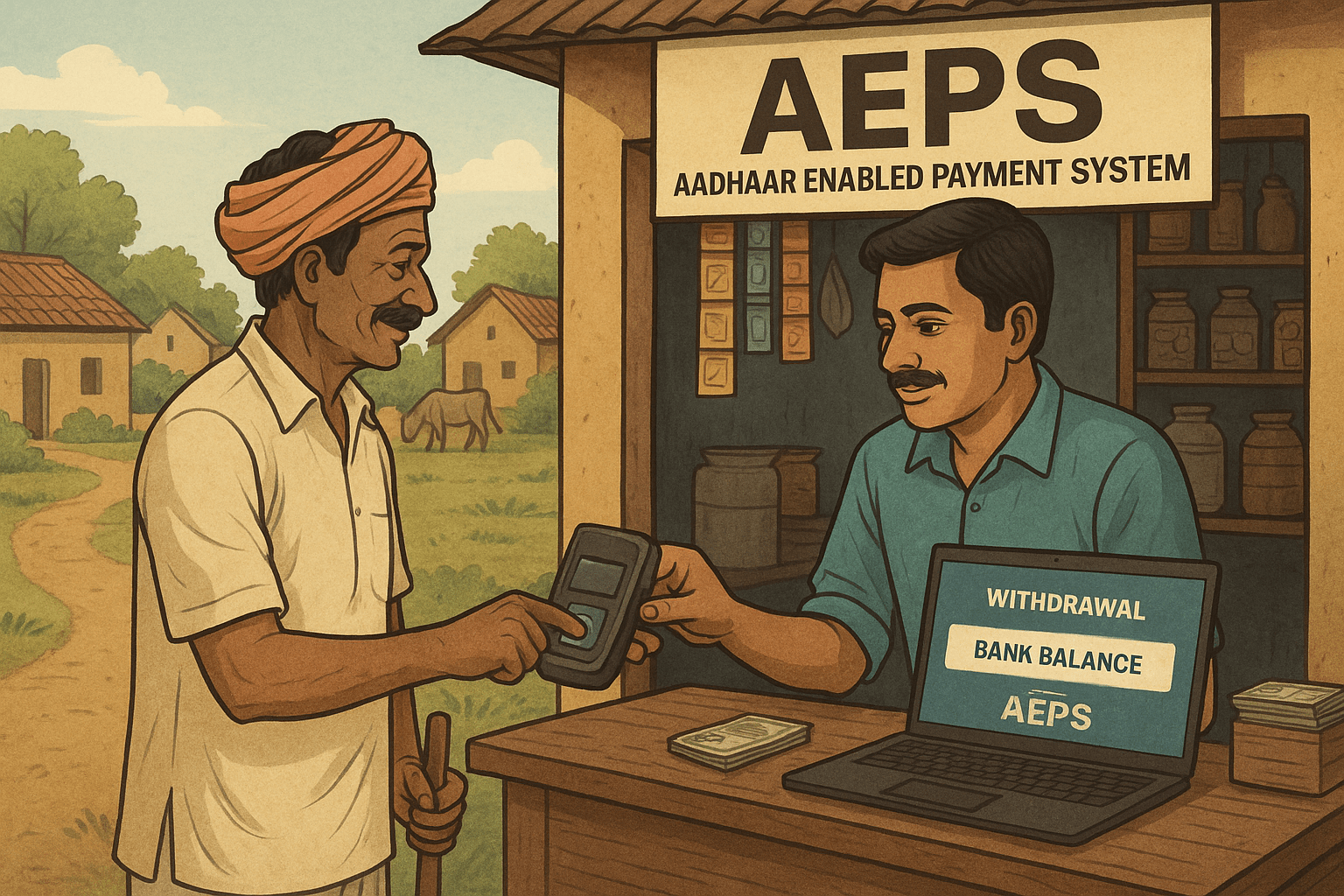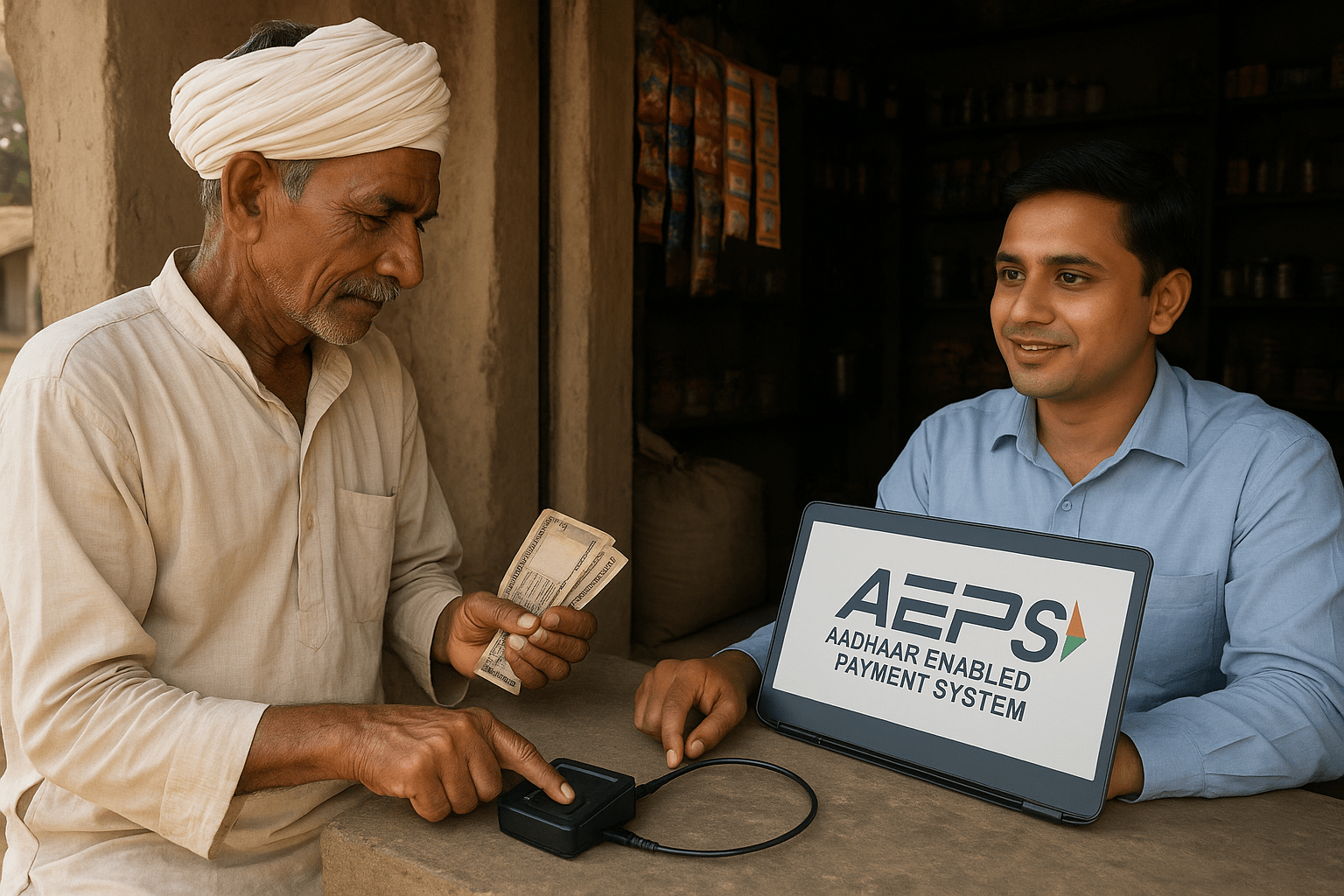Imagine a rural village in India where a farmer can walk up to a (AEPS software development) small local shop, use only their fingerprint linked to their Aadhaar number, and instantly withdraw cash, check their bank balance, or deposit money—all without a physical card, a smartphone, or an internet connection on their end. This isn’t magic; it’s the power of the Aadhaar Enabled Payment System (AEPS), and it’s revolutionizing financial inclusion. But have you ever stopped to wonder how this seamless transaction actually happens? The answer lies in the intricate world of AEPS software development.
At its core, AEPS software development is the process of building the secure digital bridge that connects a customer’s biometric authentication request at a micro-ATM to their bank’s core system and the central UIDAI database, facilitating a transaction in mere seconds. This article will pull back the curtain and give you a clear, step-by-step understanding of how this technology is built and how it functions.
Deconstructing the AEPS Ecosystem: The Key Players
Before we dive into the code, it’s crucial to understand the cast of characters involved in any AEPS transaction. The software must seamlessly connect all of them:
-
The Customer: The end-user who wishes to perform a transaction using their Aadhaar number and fingerprint/iris scan.
-
The Bank (Issuer Bank): The customer’s bank where their account is held.
-
The Business Correspondent (BC) or Agent: The individual or entity (like the local shop owner) providing the AEPS service using a micro-ATM or a biometric scanner.
-
The Acquiring Bank: The bank that facilitates the transaction for the BC agent. They provide the AEPS software and hardware.
-
The National Payments Corporation of India (NPCI): The umbrella organization that created and governs the AEPS system. It acts as the central switch routing transactions between banks.
-
The Unique Identification Authority of India (UIDAI): The guardian of the Aadhaar database. It is solely responsible for verifying the biometric authentication request.

The Technical Blueprint: How AEPS Software is Developed
Developing AEPS software isn’t about building a single monolithic application. It’s about creating a suite of interconnected components that work in harmony. Here’s a breakdown of the core modules:
1. The AEPS API Integration Layer
This is the heart of the software. Developers don’t build the entire payment rail from scratch; they integrate with the standardized APIs provided by the NPCI and the banks. This layer handles:
-
Authentication API Calls: Sending encrypted biometric data to the UIDAI for verification.
-
Transaction API Calls: Sending financial transaction requests (like cash withdrawal) to the NPCI switch, which then routes it to the customer’s bank.
-
Response Handling: Receiving and interpreting success or failure responses from all parties.
2. The Biometric Authentication Module
Security is paramount. This module is responsible for:
-
Integrating with Biometric Devices: The software must support a variety of UIDAI-certified fingerprint scanners and iris devices. This is done using Software Development Kits (SDKs) provided by the hardware manufacturers.
-
Data Capture and Encryption: Capturing the raw biometric data, compressing it, and encrypting it using strong standards (like AES-256 encryption) before it is sent to the UIDAI. The software never stores biometric data; it’s only a secure conduit.
3. The Transaction Processing Engine
This is the brain that orchestrates the entire flow. It defines the business logic for:
-
Transaction Types: Handling the four main AEPS services: Cash Withdrawal, Cash Deposit, Balance Inquiry, and Aadhaar to Aadhaar Fund Transfer.
-
Fee and Commission Calculation: Automatically calculating the Business Correspondent’s commission for each successful transaction.
-
Transaction Routing: Deciding the optimal path to send the transaction request.
4. The Admin and Agent Management Dashboard
A powerful backend panel is developed for the Acquiring Bank and BC agents to manage operations. This includes:
-
Agent Onboarding: Registering new BC agents and linking them to specific terminals.
-
Settlement and Reconciliation: Viewing daily transaction reports, tracking settlements from NPCI, and reconciling accounts.
-
Monitoring: Real-time monitoring of all active terminals and transaction statuses.
5. Security and Compliance Layer
Given the sensitivity of the data, this is woven into every line of code. It ensures:
-
PCI-DSS and UIDAI Compliance: Adhering to the strictest data security standards for payment and Aadhaar data.
-
End-to-End Encryption (E2EE): Ensuring data is encrypted from the biometric device all the way to the bank’s server.
-
Tokenization: In some advanced implementations, the Aadhaar number is tokenized to add an extra layer of security.
The Magic in Motion: A Step-by-Step Transaction Flow
Let’s follow the journey of a cash withdrawal request through the AEPS software you just built:
-
Initiation: A customer provides their Aadhaar number, bank name (IIN), and fingerprint on the micro-ATM at a BC outlet.
-
Capture & Encrypt: Your AEPS software on the device captures the biometric data, encrypts it along with the transaction details, and sends it to the Acquiring Bank’s server.
-
Routing to NPCI: The Acquiring Bank’s server forwards this encrypted packet to the NPCI switch.
-
Authentication Request: NPCI identifies the customer’s bank (Issuer Bank) and routes the biometric data only to the UIDAI for verification.
-
Biometric Match: UIDAI processes the request, matches the fingerprint against its database, and sends a “Yes/No” authentication response back through the same chain (NPCI -> Issuer Bank -> NPCI -> Acquiring Bank).
-
Transaction Approval: If authentication is successful, NPCI now sends the financial transaction request (e.g., debit ₹1000) to the Issuer Bank.
-
Funds Deduction: The Issuer Bank checks the customer’s account, approves the debit, and sends a confirmation back.
-
Success!: This confirmation travels back through NPCI to the Acquiring Bank, which then sends a “Transaction Successful” message to the micro-ATM. The device dispenses cash, and a receipt is printed.
-
Settlement: At the end of the day, NPCI facilitates the net settlement of funds between the Acquiring Bank and the Issuer Bank, and the BC agent receives their commission.
All this happens in less than 5-10 seconds.

The Challenges in AEPS Software Development
Building this isn’t without its hurdles:
-
Biometric Failures: Handling scenarios where fingerprints are worn out or not recognized, requiring software to gracefully guide the user to try again.
-
Network Reliability: Ensuring transactions can be stored and processed later (posted) in areas with poor internet connectivity.
-
Fraud Prevention: Implementing robust mechanisms to detect and prevent fraudulent transactions and agent malpractice.
-
Constant Updates: Keeping the software updated with the latest NPCI and UIDAI mandate changes is a continuous process.
The Future is AEPS-Driven
AEPS software development is more than just coding; it’s about building the plumbing for a financially inclusive India. As technology evolves, we’re seeing AEPS integrate with newer platforms, moving beyond micro-ATMs to Android-based POS devices and even enabling Aadhaar-based authentication for other financial products. For developers and businesses, understanding this ecosystem is key to tapping into the next wave of digital growth in India, reaching the millions who are still unbanked or underbanked.
By creating robust, secure, and user-friendly AEPS software, developers aren’t just building applications—they are actively building a more inclusive economic future.
Frequently Asked Questions (FAQs)
1. Do I need a bank’s permission to develop AEPS software?
Yes, absolutely. You cannot directly connect to the NPCI switch as an individual developer. You must partner with a bank (an Acquiring Bank) that is a member of the NPCI. They will provide you with the necessary API credentials, certification, and access to the staging environment for testing.
2. What programming languages are used for AEPS development?
The backend, which handles the heavy lifting of API calls, security, and transaction processing, is typically built in robust languages like Java, Python, or .NET. The frontend application that runs on the micro-ATM or Android device can be built using Java, Kotlin (for Android), or cross-platform frameworks like Flutter.
3. Is it expensive to develop AEPS software?
The cost can be significant. It’s not just about development hours; it involves:
-
Licensing Fees: Fees for using NPCI/UIDAI APIs and certifications.
-
Hardware Investment: Purchasing UIDAI-certified biometric devices for testing and deployment.
-
Compliance Audits: Regular security audits to maintain compliance.
-
Infrastructure Costs: Maintaining highly secure and reliable servers.
4. Can AEPS work without internet?
The core authentication and transaction process requires an internet connection to communicate with UIDAI and NPCI in real-time. However, the software can be designed to store transaction details locally if the network fails and automatically “post” them once the connection is restored, ensuring no data is lost.
5. How secure is AEPS? Is my Aadhaar data safe?
The system is designed with multiple layers of security. The biometric data is encrypted and never stored by the AEPS software or the BC agent. It is sent directly to the UIDAI for verification, which only responds with a yes/no answer. The financial transaction is handled by the banks and NPCI using secure banking channels. The risk is minimized through encryption, tokenization, and strict compliance protocols.
Disclaimer: This article is for educational and informational purposes only. It provides a high-level overview of the AEPS software development process and is not a guide for building a live system. The actual development requires formal certification, partnership with regulated entities, and strict adherence to the guidelines set by NPCI, UIDAI, and RBI. All trademarks (like Aadhaar, NPCI) belong to their respective owners. If you have any concerns regarding the content of this post, please visit our DMCA page and follow the outlined procedure for content removal.
